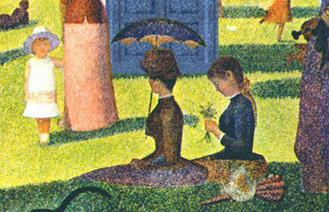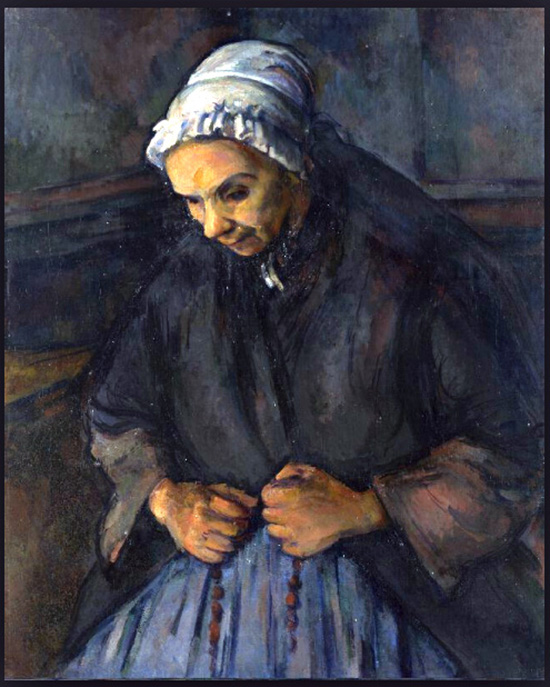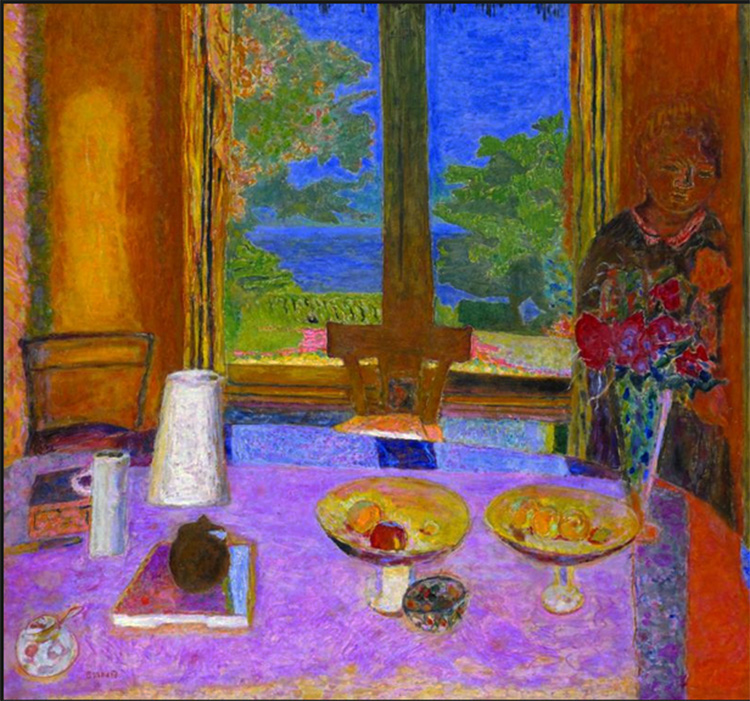Subtleties of reflected light
The purpose of this Post is to provide the link below to “The perception of surface”, Chapter 7 of my book “Painting with Light and Colour”. This provides illustrations and explanations of ways we perceive: (a) reflected light as opposed to transmitted light, (b) matt surfaces as opposed to glossy ones, and (c) the complexities of interreflections. Apart from their intrinsic interest, the function of these in the book is to prepare the ground for the next chapters, which explain how Georges Seurat’s ideas about “painting with light”, either directly or, more often, indirectly, were to revolutionise the use of colour in paintings in a multiplicity of ways. Thus, the next Post will provide a link to Chapter 8, which, after introducing Seurat’s ideas and methods, starts the process of going more deeply into their game-changing ramifications. What follows below gives a foretaste of the nature of these.
Game-changing ramifications
Not nearly enough importance is given to the impact of Georges Seurat’s ideas concerning the depiction of reflected light. Their significance lies in the fact that, either directly or indirectly, they were to have a transformative, game-changing influence on the way later artists:
- Painted reflected light.
- Approached the depiction of illusory pictorial space.
- Explored whole-field colour relations.
- Ramped up the colourfulness of their paintings.
Too often in the past the focus has been on Pointillism as a method, treating it as a fascinating, but not so very important phase in art history. In contrast, in my book, I show that the ideas behind Seurat’s innovations, as developed and transformed by his successors, were to open up possibilities of permanent value for anyone who makes paintings of virtually any kind. With hindsight we can see that Seurat’s ideas:
- Furnished one of the two pillars that underpin the transformative use of colour found in the work of numbers of progressive artists, including Gauguin and Bonnard. As we shall see in later chapters, when we come to the subject of whole-field colour relations, the artist primarily responsible for the other pillar was Cézanne. It was these two sets of ideas that were to be synthesised in the dogmas of Marian Bohusz-Szyszko.
- Opened the way to scientific experiments that supplied coherent insights into the working principles of the eye/brain systems that enable the perception of surface-solidity, surface-form, in front/behind relations and the qualities of light (reflected light and ambient illumination). Since it is the operation of these that make possible the only way that artists can use colour/lightness relationships to deceive viewers into interpreting the content of paintings as existing in illusory pictorial space, it is hard to exaggerate the practical value for painters wishing to represent any of the above mentioned qualities in their work.
To prepare for grappling with all this, it is helpful to be clear about the role that the light reflected from surfaces has in creating our sense of their solidity and our perception of both their form and their interconnectedness.
CHAPTER 7-THE PERCEPTION OF SURFACE
Three images by artists whose work and ideas contributed to the synthesis of Professor Bohusz-Szyszko
The two practical dogmas taught by the Professor are:
- No repeated colour.
- All colour must be mixtures containing a proportion, however small, of complementaries.



——————————————————————————————
Posts relating to other chapters from “Painting with Light and Colour”:
- Introduction: the little known Science behind many of the original practical suggestions.
- Chapter 1 : The dogmas
- Chapter 2 : “doubts”.
- Chapter 3 : “The nature of painting”
- Chapter 4: Renaissance ideas
- Chapter 5 : New Science on offer
- Chapter 6 : “Early Modernist Painters”
- Chapter 7 : Perception of surface.
Another Post that relate to painting reflected light:
List of all Posts so far
Got to top
I find (also) this chapter really really and aptly “enlightening”! Why is it that so far no publishing company has had the wits to publish this important work?
Here you offer tools that painters can choose to use, which I feel should be part of their fundamental tool kit. They are invaluable and easily accessible. Thank you for offering these insights freely via your posts.
merci encore de ces informations si importantes pour comprendre notre propre travail de peintre, et avancer sur un chemin de connaissance dans notre recherche personnelle
Brilliant in every sense, spot on Francis.
I think any painter who wishes to progress will benefit by absorbing your learned remakes. t
Thank you for sharing these remarkable insights.
For sure you and those painters you discuss here have improved and profondly influenced my efforts.
Again, it is rare knowledge you share that every painter should know about. Many people are understandably focused on painting what they feel they see, but as you clearly say, having an understanding of what is invisible, yet of fundamental importance in order to create many qualities in paintings, is such a gift to any artist. Not only do you share the theory, but in later chapters you actually provide people the know-how to paint that which is invisible, but so necessary to create many effects that are often desired by painters regardless of their subject matter or manner of painting.